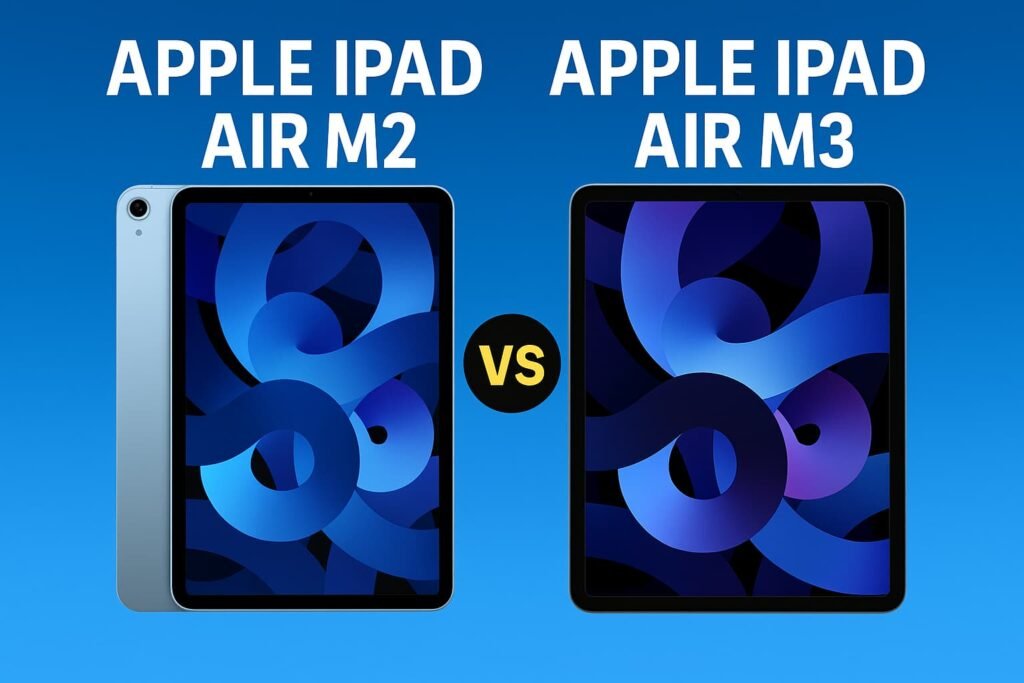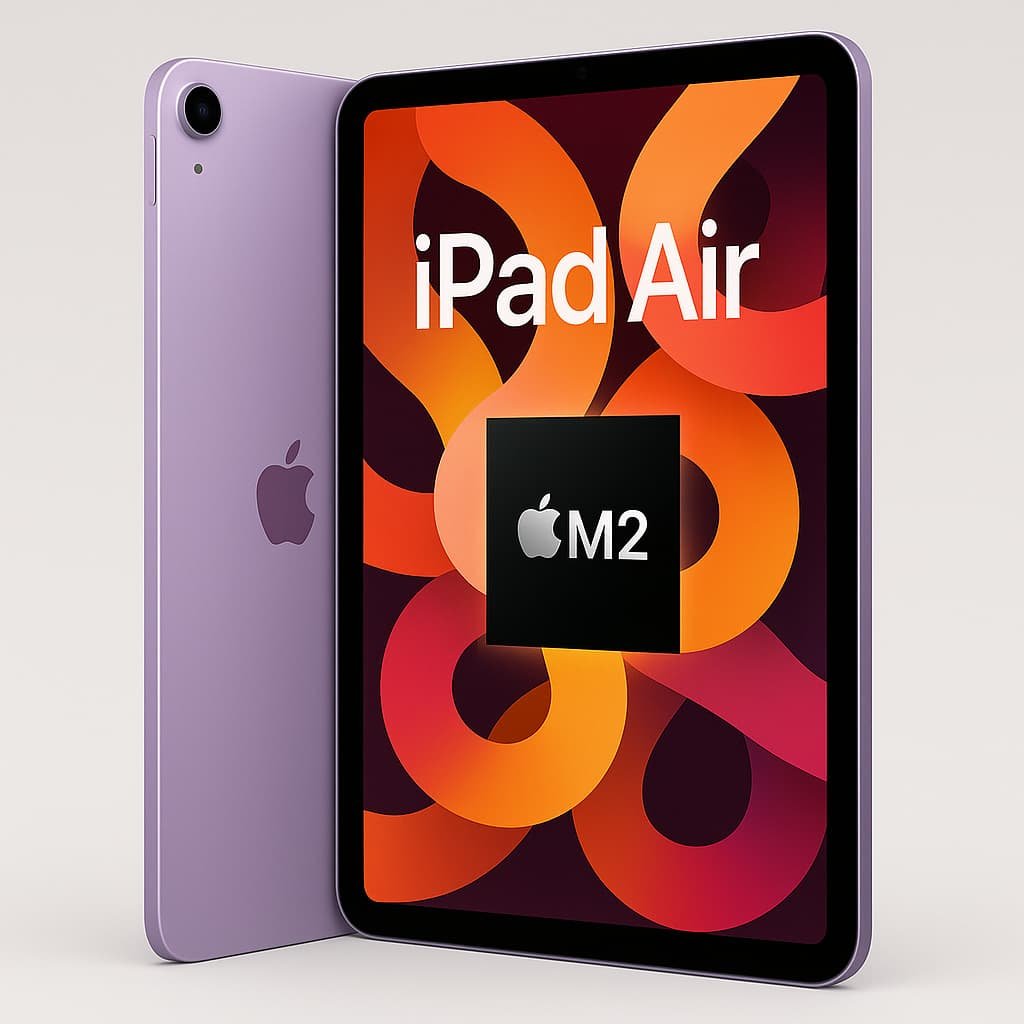Apple has once again stunned the tech world by unveiling the iPad Air M3, following soon after its highly-acclaimed predecessor, the iPad Air M2. With the rapid release times from Apple in the areas of innovation, most consumers are left wondering: “Apple iPad Air M2 vs M3 – which is the best buy?”

Whether you’re a student, creative professional, or one-off user, it’s essential to know the differences between these two tablets before you splash your money. In our review, we break down everything you need to know about Apple iPad Air M2 vs M3 — from design and performance to features and value for money.
Design & Build: Understated Yet Premium
As far as design is concerned, both iPad Air M2 and M3 have the premium, minimalist looks Apple is renowned for. The 10.9-inch Liquid Retina display still shines on both devices, coming equipped with True Tone, P3 wide color, and anti-reflective coating. At first glance, the Apple iPad Air M2 vs M3 may seem the same, but there is a subtle yet noticeable difference.
iPad Air M3 boasts a mildly lighter weight frame due to Apple’s refined inner design. While the difference is minor, users concerned with portability will appreciate the improved weight distribution on long use.
Performance: M2 vs M3 Chip
Apple M2 Chip (iPad Air M2)
- 8-core CPU and 10-core GPU
- 5nm architecture base
- Handles 4K video editing, multitasking, and gaming without a sweat
Apple M3 Chip (iPad Air M3)
- 8-core CPU and 10-core GPU for improved efficiency
- Powered by the new 3nm architecture
- 20% boost in performance and 30% GPU rendering improvement
The biggest leap in Apple iPad Air M2 vs M3 competition lies in the new 3nm M3 chip. According to Apple, it provides quicker processing, better power efficiency, and more sophisticated AI.
If you take heavy use of it with demanding creative apps like Final Cut Pro or Adobe Illustrator, the apple ipad air m2 vs m3 makes it evident that the M3 model provides a smoother, more futuristic experience.
Battery Life: Slight Boost with M3
Battery life remains great on both devices with up to 10 hours of web browsing or video playback over Wi-Fi.
But due to the more power-efficient 3nm process of the M3 chip, the iPad Air M3 has a slight advantage of some 30–45 minutes of additional screen time in real-world usage scenarios.

It might not sound extreme but can be consequential when one is on the go or studying for hours at a stretch.
Software & iPadOS Support
Both iPads ship iPadOS 17 out of the box and will get some years of updates. With multitasking features like Stage Manager, Split View, and support for outside monitors, the Apple iPad Air M2 vs M3 software experience is virtually identical today.
Future iPadOS upgrades will, though, potentially begin to leverage the M3’s oomph as Apple adds more machine learning and AI-oriented features.
Accessory Compatibility
Good news: both iPads support the 2nd-generation Apple Pencil, Magic Keyboard, and Smart Folio, so switching will be smooth if upgrading from the M2 to the M3.
Apple has continued to maintain accessory compatibility across these models, so you won’t need to shell out on peripherals a second time, which is a big benefit if considering the Apple iPad Air M2 vs M3 choice.
Camera & Audio
Both models include:
- 12MP rear camera with 4K recording
- 12MP ultra-wide front camera with Center Stage
- Stereo speakers when in landscape orientation
Apple hasn’t really enhanced the camera and audio setup of the M3 model. As a result, if video calls, photography, and media playback are your key use cases, the experience is virtually the same.
Connectivity: Wi-Fi & 5G
Both models have:
- Wi-Fi 6E (new instead of Wi-Fi 6 on older models)
- Optional 5G support
- USB-C port for charging and data transfer
There is no variation in wireless or port standards between the two, hence the Apple iPad Air M2 vs M3 tie here.
Storage Options & Prices
iPad Air M2 Prices:
- 64GB Wi-Fi: $599
- 256GB Wi-Fi: $749
iPad Air M3 Prices:
- 128GB Wi-Fi: $599
- 512GB Wi-Fi: $899
Apple surprised fans by doubling the base storage of the M3 to 128GB without increasing the starting price. This gives the M3 an incredible value increase. The inclusion of a 512GB model also gives professionals more options.
Value for Money: Which One Is Worth It?
If you already have the iPad Air M2, the M3 upgrade is not necessary—unless you need:
- The boost in power for pro-grade creative work
- Slightly better battery life
- More internal storage without paying the extra fee
But if you are buying a new iPad Air in 2025, the M3 is the obvious choice. You get better performance, additional storage, and future-proof compatibility for the same starting price.
Apple iPad Air M2 vs M3: Ultimate Verdict
When we compare Apple iPad Air M2 vs M3, the M3 is unequivocally superior in performance, battery life, and storage capacity without increasing the base price. That being said, the M2 is nonetheless a powerful device that is well worth the money, especially if you can catch it on sale.

Choose the iPad Air M2 when:
- It’s available on sale at a good price
- You’re a light user (streaming, note-taking, browsing)
- You don’t need extra storage or bleeding-edge performance
Choose the iPad Air M3 if:
- You’re buying your first iPad Air
- You want maximum performance and longevity
- You work with creative tools and large files
FAQs About Apple iPad Air M2 vs M3
Q: Does the iPad Air M3 support the same accessories as the M2?
Yes, both support the Apple Pencil 2, Magic Keyboard, and Smart Folio.
Q: Is the quality of the display on the iPad Air M2 and M3 different?
No, both have the same 10.9-inch Liquid Retina display with P3 wide color and True Tone.
Q: Will the iPad Air M3 be updated more times with iPadOS than the M2?
Most likely, since the newer processor generally has a wider support window.
Q: Is there really a big difference in speed in day-to-day usage?
For day-to-day usage—no. Okay, for creative professionals and multitaskers, the M3 is more responsive.